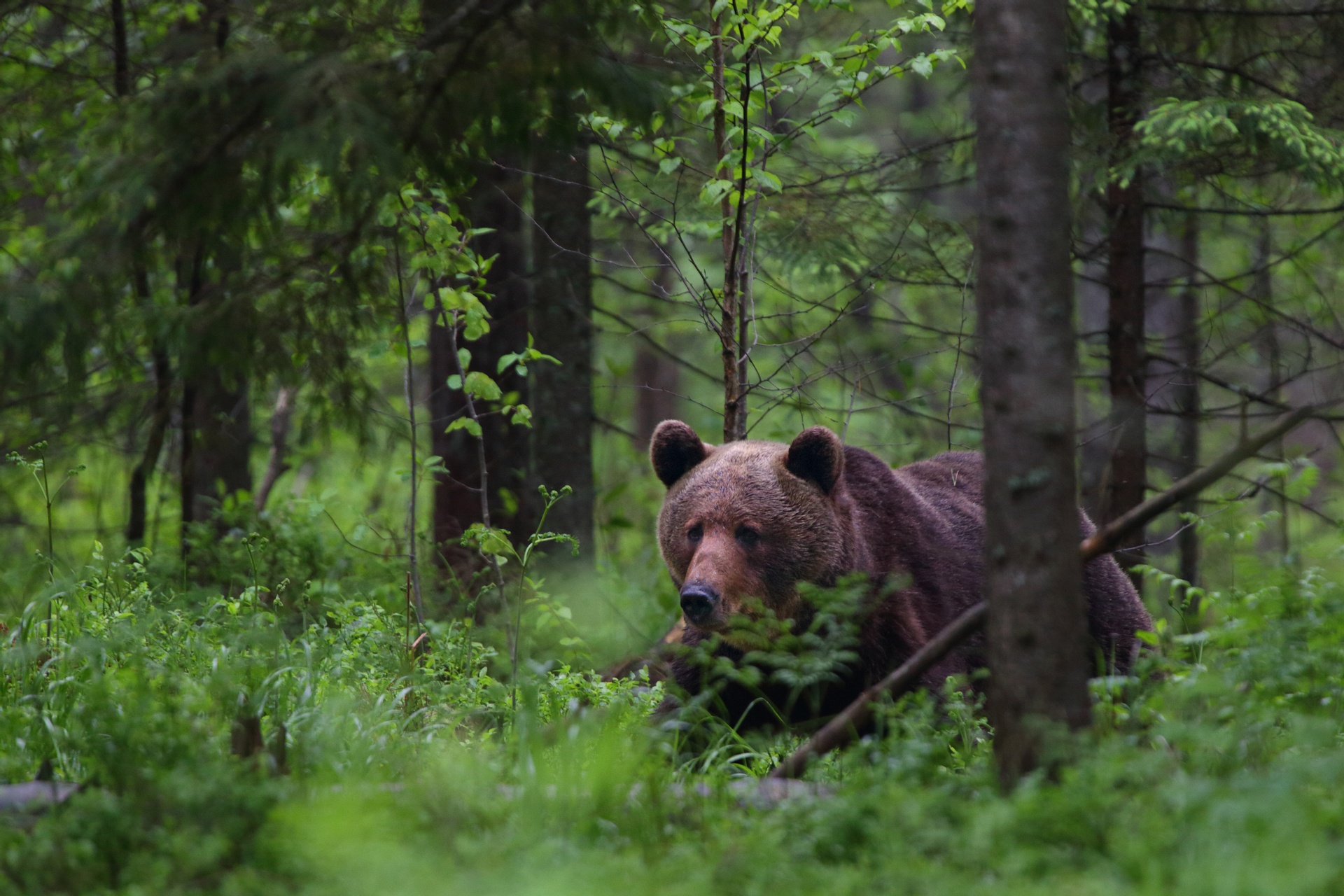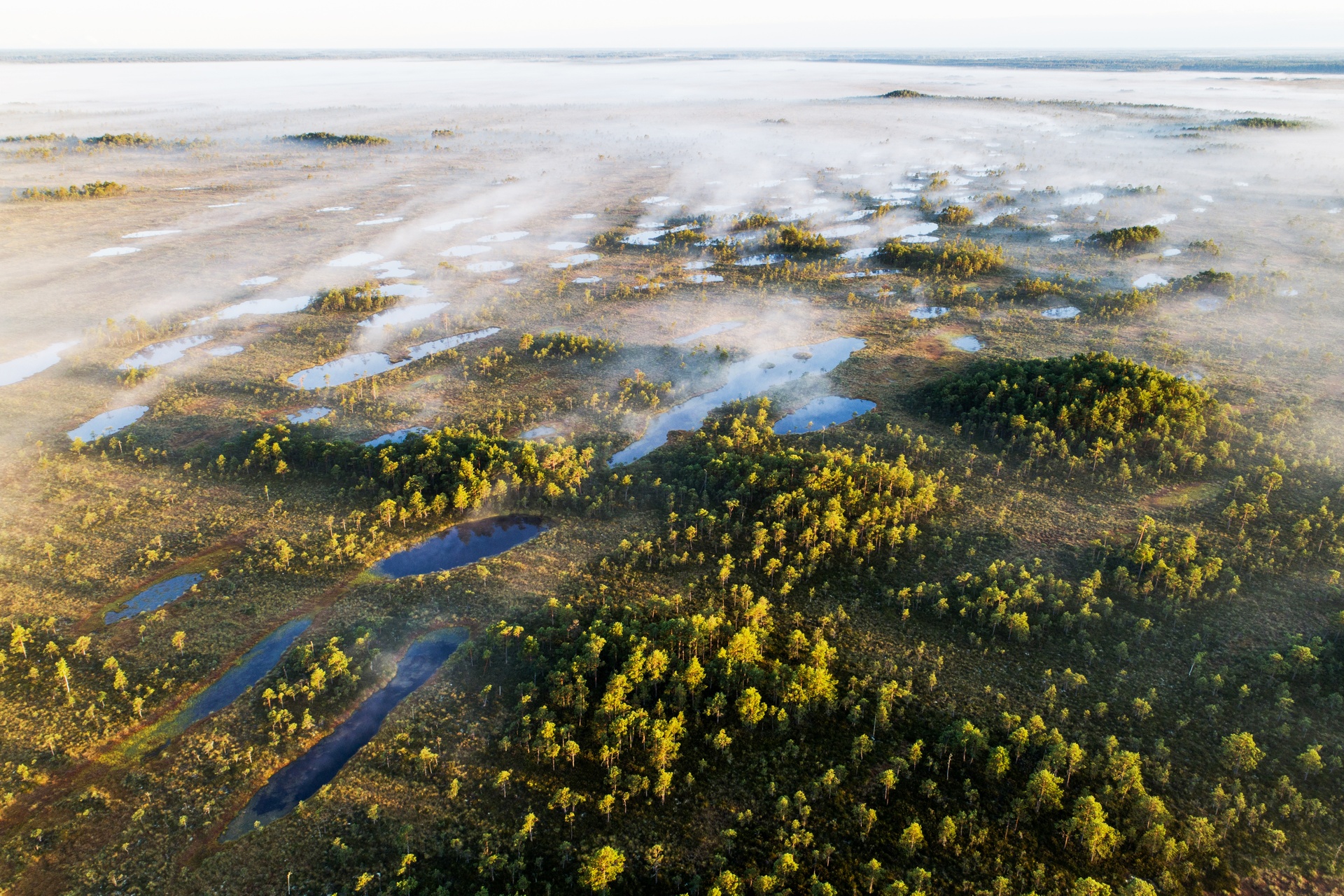
Alutaguse National Park
Estonia’s newest national park contrasts with its surroundings—wild nature alternates with villages, ancient burial sites, and former mining areas.
Alutaguse National Park is remarkable for its native forests and deep marshes, reminiscent of the taiga.
Established in 2018, Alutaguse is the newest of Estonia's national parks. It's a patchwork of 11 areas, ensuring the homes of several endangered or rare species, such as willow ptarmigan, black storks, and flying squirrels, are protected. It is also one of the best places in the country to go bear watching.

Brown bears roam the forests of Alutaguse National Park.
About 500 of them make their home in the larger Alutaguse region, making it the densest population of brown bears in Europe.
Want to see bears with your own eyes?
Try staying overnight in one of the purpose-built bear-watching hides to observe them from a safe distance.
Endless opportunities for outdoor adventures
Discover a unique landscape along the Agusalu bike trail — these continental dunes are up to 18 meters high with good berry and mushroom forests, an off-the-beaten-path destination seldom visited even by locals. The Kurtna Lake system has more than 40 lakes in an area of 30 km2, attracting hikers, boaters, and campers. The ancient forest of the Poruni River can be explored on foot, and in winter, you can try snowshoeing or skiing in Muraka Bog.
What to do in Alutaguse National Park
Lake Peipsi
Europe's fifth-largest lake
The southern part of Alutaguse National Park borders Lake Peipsi (Peipus), which attracts visitors with its extensive sandy beaches and excellent boating and fishing opportunities.
There are also plenty of activities in the wintertime. Explore the frozen lake aboard a specially built vehicle called a karakat. You can also try your hand at ice fishing or glide around on a kicksled.

Photo author: Hetkeline
Get active on the north coast of Lake Peipsi
Narva
Exploring Alutaguse from a base on the border
Alutaguse National Park is about an hour's drive from Narva. Estonia's third-largest city has always had a shifting identity, thanks to its unique history and position at the crossroads of major trade routes.
Narva is an off-the-beaten-path destination for most people visiting Estonia. In addition to Alutaguse, there's a lot to explore in the area, though, including the spas of Narva-Jõesuu, Narva Castle, and abandoned industrial sites like Kreenholm Factory.

Photo author: Maxim Dubovik

Every season has something special — and an extra season gives you extra time to see it all.
Expert tip: Exploring off-season will help off-load the pressure.
Get inspired
Last updated
13.01.2026